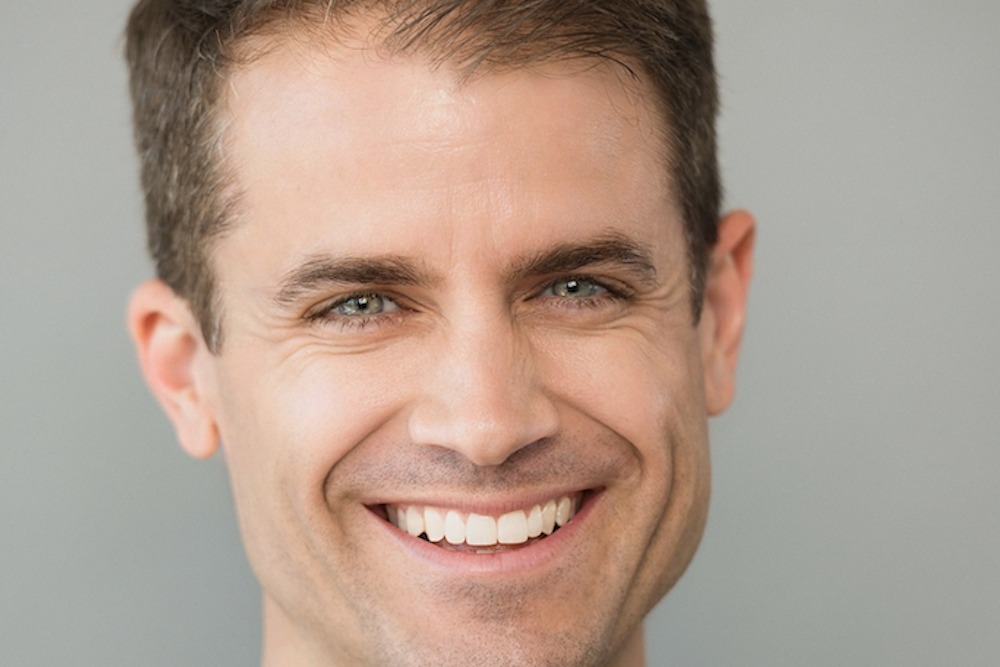
Cameron Shelton is the director of the Lowe Institute of Political Economy at Claremont McKenna College and a lead investigator in the California Consumer Sentiment Indices. Before taking part in a Zócalo/Lowe Institute of Political Economy event titled “When Will Californians Start Spending Again?,” Shelton called into the virtual green room to talk about making donuts, his favorite economist, and the most challenging part of teaching in COVID.
What did you have for breakfast today?
Belgian waffles. I got back from my run, and my wife had made them for my family.
Do you regularly run?
Well, I like to be athletic and fit. And right now, in COVID, I run. I have a colleague who also gets out there, and so we go on these runs up into the hills, maybe 5 miles. We go pretty slowly. We have conversations about all kinds of different things. It’s a good time.
What was the best conversation you had on your run today?
Are there male and female virtues? Or are there simply human virtues? We both agreed that there really aren’t. Maybe in the past there seemed to be male and female virtues. You know, toughness was male and kindness was female, or something like that. But we really don’t think in the modern era there are such things. I have an 8-year-old daughter, a 6-year-old son, and a 1-year-old son. As I raise them, I think, OK what are the virtues that I try to instill in them? What am I trying to get them to aspire to? And I was thinking, it’s really the same for both of them. There isn’t some gendered set of expectations that I have for one or the other. And that’s where I think we both ended up on it, but it was an interesting conversation.
Do you have a favorite economist?
Ken Arrow I think is the greatest economist of all time. He was still there when I was at Stanford as both an undergrad and grad student, and he was pretty old at that point, but still involved—you know, he’s in his 80s, and he’s still coming to seminars. And I just remember at one point being like, “Who’s the old guy that keeps making the smartest comments?” And someone’s like, “Dude, that’s Ken Arrow.” And I was like “Oh!”
He was a brilliant mathematician, but he also wasn’t one of these people who knows math and doesn’t have any idea about how to apply it to the real world. He was just incredibly perceptive.
What’s been the most difficult thing about teaching in COVID?
I am not teaching in the current semester. I did teach in COVID during the spring. The biggest challenge for me was reading the room. There are a number of unconscious things that we, as humans, have developed that in an in-person setting, we can just feel. I suspect it has to do with how we visually check in on faces without even thinking about it. And I just couldn’t effectively do that over Zoom. In a lot of cases, I didn’t know whether people were baffled or bored—how things were going. So that was challenging.
As an undergrad you studied both economics and physics. What’s the connection between the two subjects for you?
My dad was a professor of physics. Because of him, I grew up loving applied math, and math as a language for describing the real world. And physics was an obvious place where, even in high school, that occurred. I was always interested in more history, politics, and economics, in terms of my own reading, though. I take after my mom in that regard. And when I got to college, I don’t remember, but probably my parents said, “You know, college-level economics actually has math in it, too. You might just check it out, and see if you like it.” And so I ended up majoring in both of them. So the connection is, I think, applied math. You take a quantitative approach to learning about the world, whether it’s the social world or the physical world.
You live in Claremont. Do you consider it to be part of the Inland Empire?
Whether Claremont is in the Inland Empire depends on what definition of the Inland Empire you choose. In the modern definition, we are not. We are the easternmost city in L.A. County. So, at the edge of town, you go from L.A. County to San Bernardino County, and the technical definition of the Inland Empire as a Metropolitan Statistical Area by the Census Department, that definition is the two counties, San Bernardino and Riverside counties. So that would place Claremont just outside of the island Empire.
But there are older definitions, which include Claremont and Pomona, these last couple of towns in L.A. County as part of, less of a specific governmental definition and more of a general idea of a region. And in those older definitions, we are part of the Inland Empire.
Do you identify as an L.A. County resident or an Inland Empire resident?
Probably personally because of my work at the Lowe Institute, I’ve tried to orient us toward the Inland Empire. I’m working with, and cooperating with and, you know, talking to a lot of people in the Inland Empire. So probably the latter, probably the Inland Empire.
What was the last thing that inspired you?
Cook’s Illustrated magazine. It inspired me [and my wife] to bring new recipes in: How about we just pick out a recipe from this, and just go for it, and learn a few new techniques, do some stuff? Because, you know, raising three kids in a pandemic and doing two jobs isn’t challenging enough.
What’s the best recipe you’ve made so far?
Donuts. When your 1-year-old goes, “Daddy donuts!” that’s truly rewarding. I mean, my 6- and 8-year-olds were also super excited. But it wasn’t quite as cutely phrased.



